There has always been interest in how much improvement is possible through increasing format size. Manzur Fahim, a frequent contributor to the medium format DPR forum, recently posted a series of distant landscape images from the following camera/lens combinations:
- Fuji GFX 100 + Fuji GF63mm F/2.8 R WR (49.77mm equiv.)
- Sony A7R IV + Sony Planar T* FE 50mm F/1.4 ZA (50mm equiv.)
- Sigma SD Quattro + Sigma 30mm F/1.4 DC Art (45mm equiv.)
- Sony A6000 + Sony Distagon T* FE 35mm F/1.4 ZA (52.5 equiv.)
The equivalent focal lengths are by diagonal, but I, being a fan of images squarer than 3:2, normalize by image height. Manzur developed the images, but I’m not clear on the details. I started with his full-sized JPEGs, and up-sampled (or, in the case of the a7RIV 16-shot pixel shift image, down-sampled) them to 10,000 pixels high with Topaz GigaPixel AI at default settings with face detection turned off.
Here’s the scene, with the GFX 100:
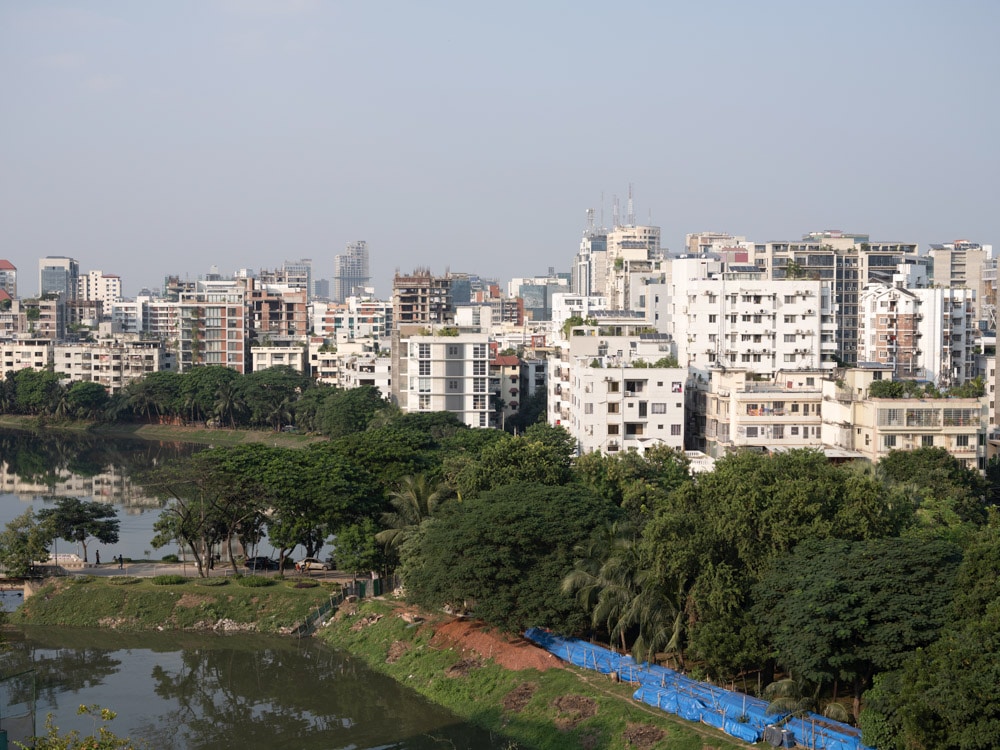
This is not my favorite vehicle for comparison tests, because there is the possibility of atmospheric distortion invalidating the results, but, with some garing exceptions that I’ll point out as we go along, the images look pretty clean to me, so that is probably not too significant here. The captures were all at f/4 except for the GFX 100 image, which was made at f/5.6. Thus equivalence of aperture prevails for the FF and MF images, but not for the others.
Some tight crops of what I consider to be a revealing area of the scene, shown here are about 200% of the 10,000-pixel-high image. The order is by increasing format size.
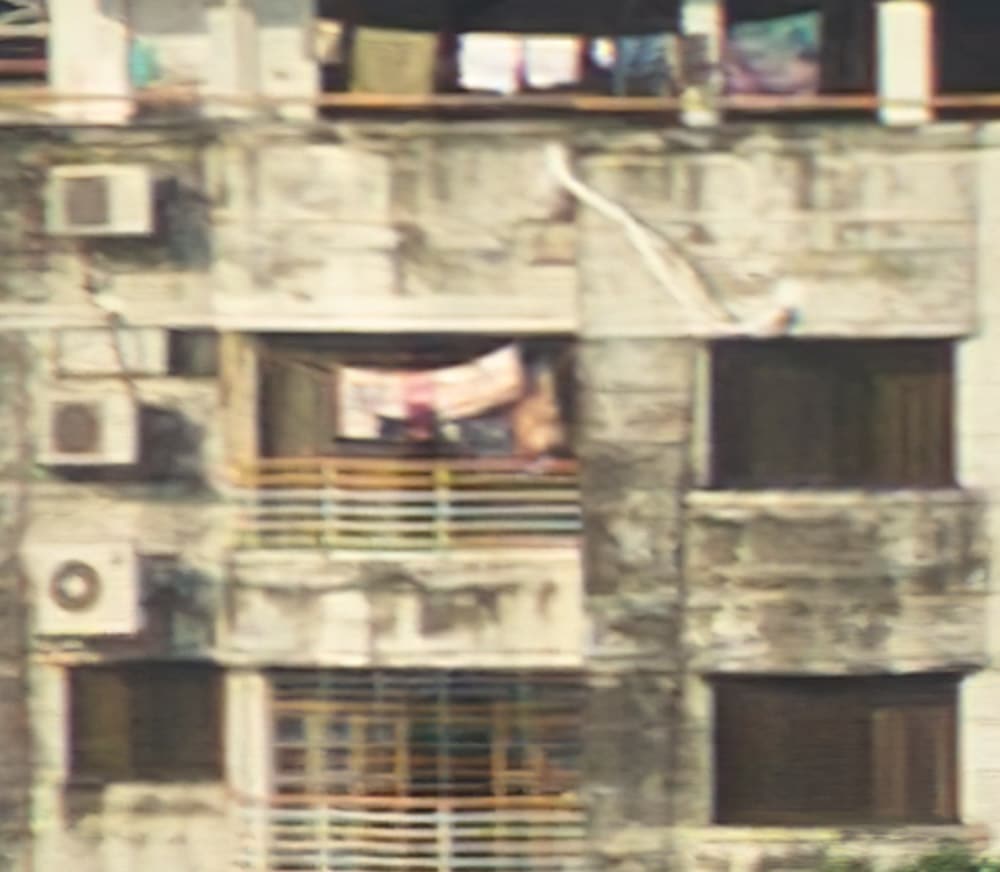
Even Topaz AI technology can’t fix this one.
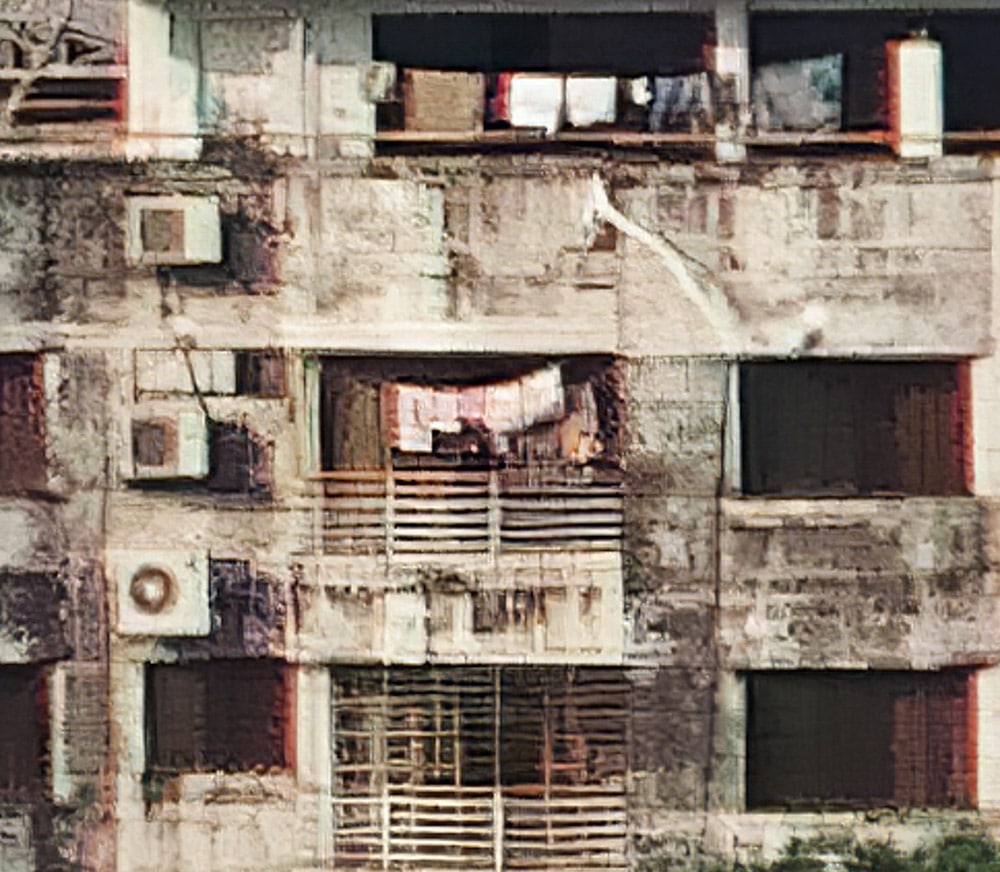
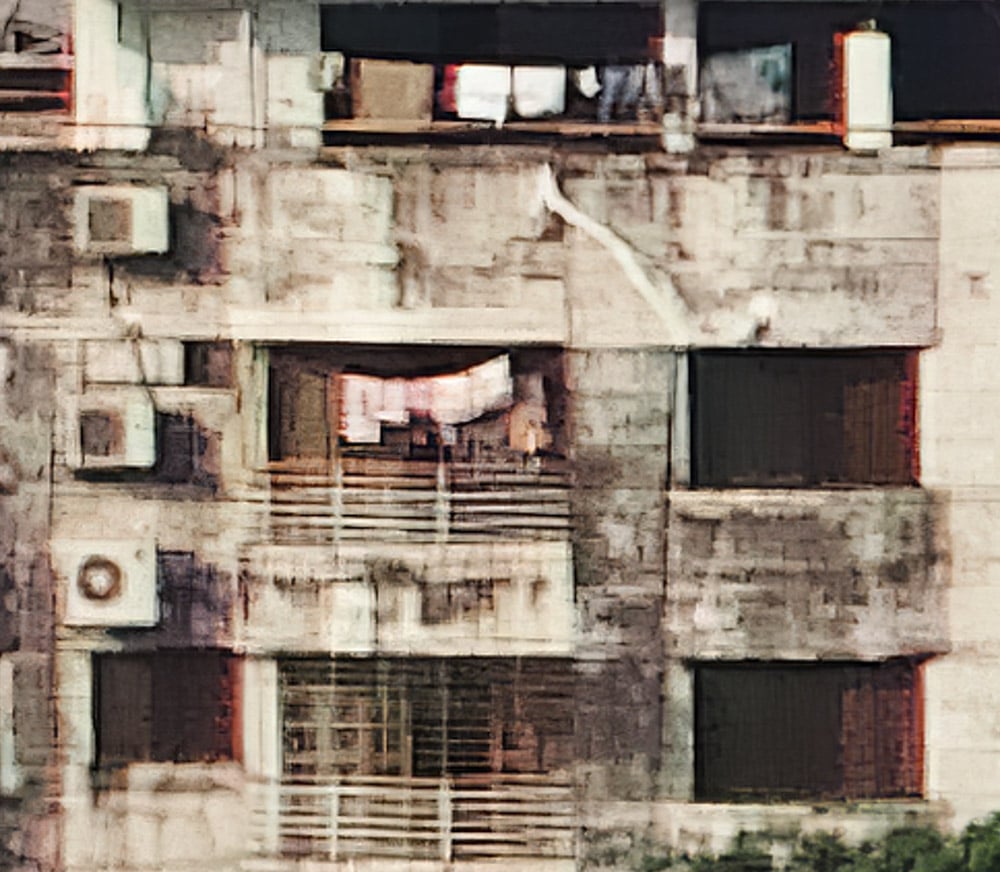
There is a fair amount of lateral color in the Sigma images, but they have clarity and verisimilitude that eludes the a6000. There is what looks like distortion in the railings, as GigaPixel AI struggles with the relatively small amount of data available.
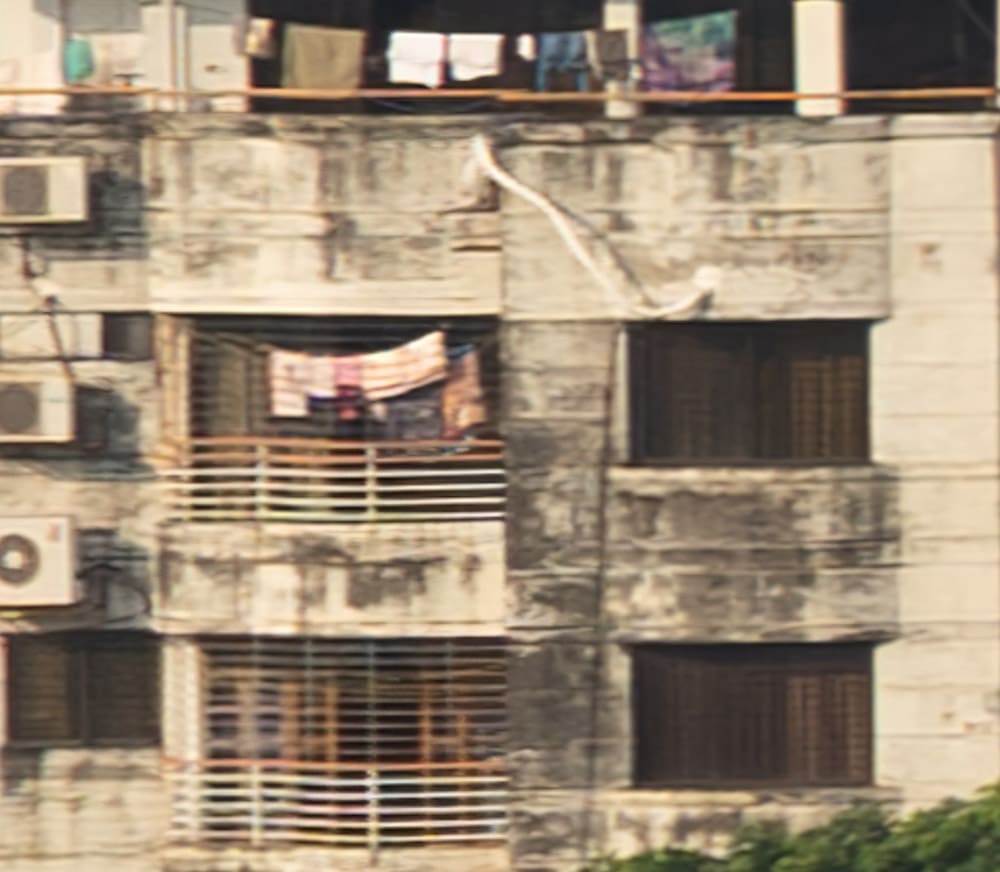
This is quite a credible image.
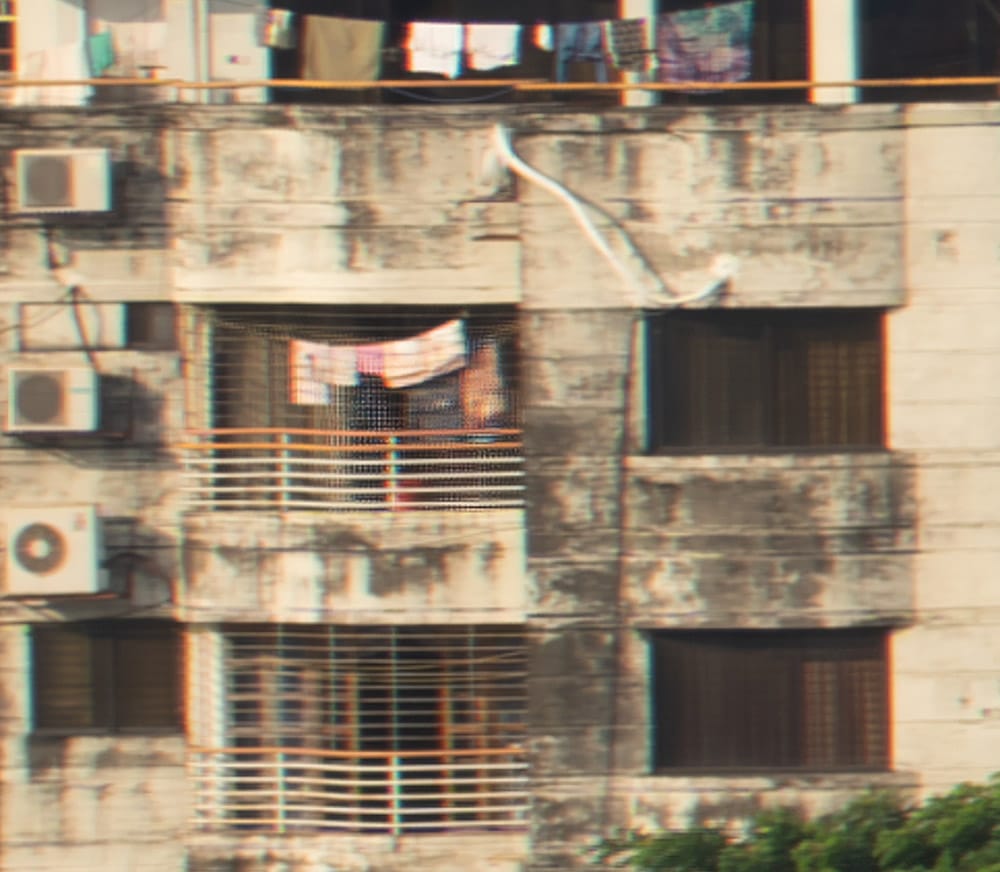
It’s interesting that there is more lateral color in this image than in the single-shot image. There is an artifact under the lower clothesline. Note that in some areas of the image, the multishot photo is less sharp than the single shot a7RIV capture. I think that’s probably due to atmospheric effects.
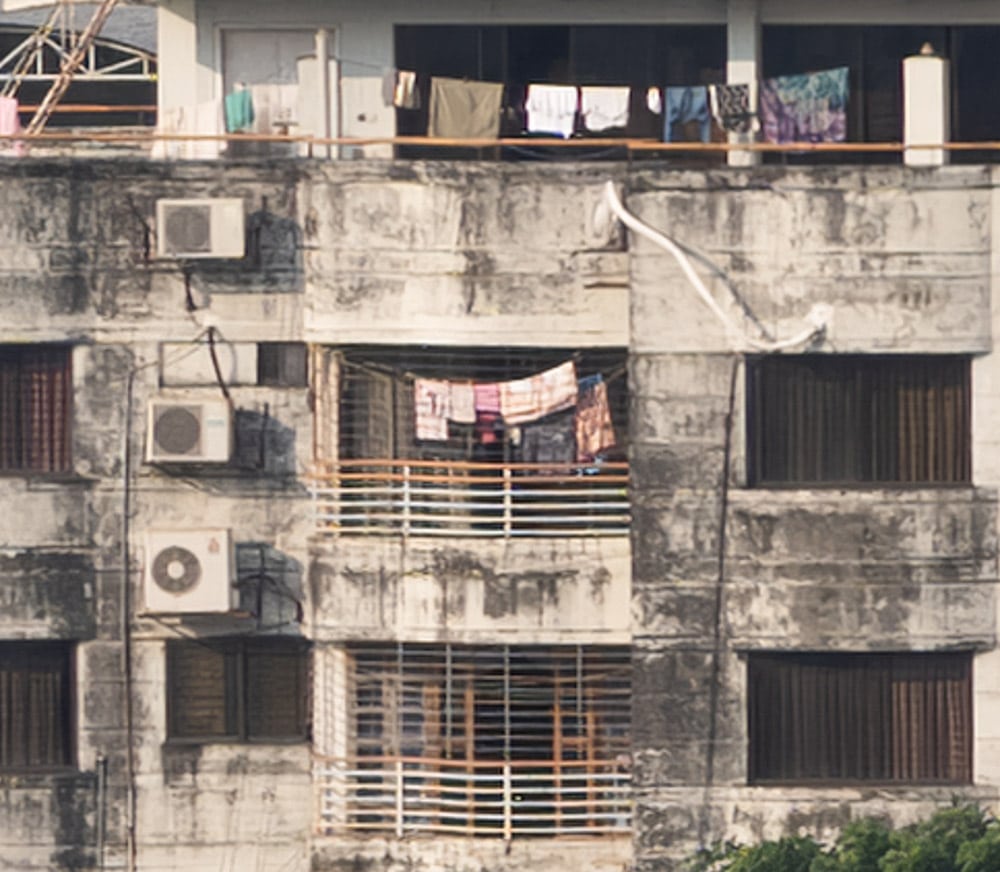
I don’t have any difficulty picking a winner here, and it’s the image directly above. And the Fuji 63 is not the best lens in the Fuji lineup; if I had to rank them, I’d put it next to last. Not that it’s bad, by any means; you can see that above.
DPR just posted an article anointing the a7RIV as the best landscape camera. I would quarrel with that. They didn’t consider the GFX 100, but I think they should have done so.
Erik Kaffehr says
Hi Jim,
Thanks for this comparison. I guess that the lateral color in the multishot image is caused by the lens. The reas on it is absent in the normal image is that Lightroom (or whatever Manzur uses) eliminates it in processing.
I did a quick comparison at a lower vertical size (80×120 cm at 180 PPI), in that case the result was different, which is interesting but not unexpected.
I would think that the GFX 100 is entirely feasible as a landscape camera. So, I agree with your point on DPR’s ranking.
I am thankful that Manzur made this comparison. It is also interesting to note that the Sigma SD Quatro does really well.
Best regards
Erik
Brandon Dube says
The Quattro image is pretty gritty, but it has an aesthetic that is very unique among the players present. And in terms of clarity I think it is closest to the GFX100. Though that may just be because it is much higher contrast.
FredD says
Brandon, that “clarity” suggests that Sigma may be on to something with Foveon, and Foveon may finally reach some better degree of useability, if they do indeed go forward with a (reportedly) ~20mp full-frame Foveon, but non-Quattro, camera. With the increased pixel area from the bump-up to full-frame while keeping total pixels modest, plus technology improvements, Sigma must think they can drop the Quattro aspect while retaining Foveon.
~20 mp with Bayer was decided-on as adequate by Nikon for their current crop of APS-C DSLRs, and the Z50. Despite the artifacts from demosaiicing.
The Quattro design, with its pixel pooling for the lower (green and red) layers, was, I presume, necessitated by the need to increase sensitivity and dynamic range of those lower layers, because not enough photons were penetrating deeper into the silicon. But Quattro reduced resolution for those colors. And I also see numerous artifacts in DPR’s Siemens star and resolution taper areas of their studio test image from the SD Quattro-H camera. These areas are littered with white and black spots. (Dead/stuck pixels and/or noise perhaps having a wider impact because of Quattro as well as the subtraction calculations inherent in Foveon?) Yet if you look at the other (“real world”) parts of the DPR studio image, and compare them with those from the Sony A6100, the Foveon wins hands down with regard to perceived clarity. The win is especially extreme in the “aliasing hell” portion of the DPR studio scene.
Sal Santamaura says
“…the Fuji 63 is not the best lens in the Fuji lineup; if I had to rank them, I’d put it next to last…”
Which one would you rank best in that lineup? Have you developed a concise ranking of all of them?
JimK says
The 110/2.
No. I’d put the 100-200 at the bottom, though. That doesn’t make it a bad lens, though.
yangho says
combo sigma sdq kit len is about 600$ in my place; i think buy it based on your test. Of cause sdq not reach sigma dpm IQ but I think lack of good algorithms (vs bayer sensor) is make sdq results look worse than a7r4